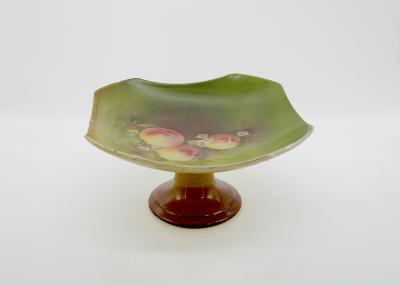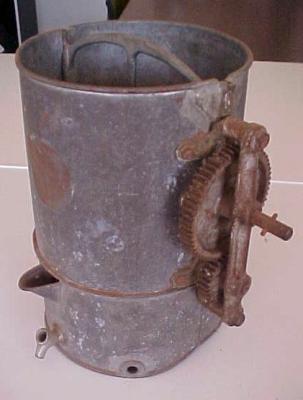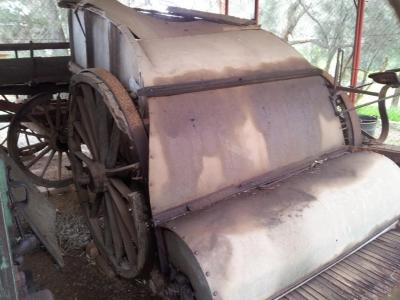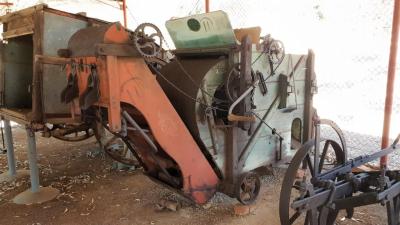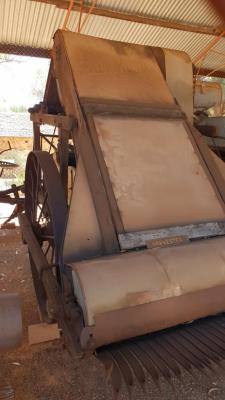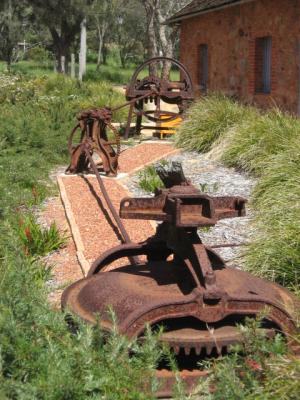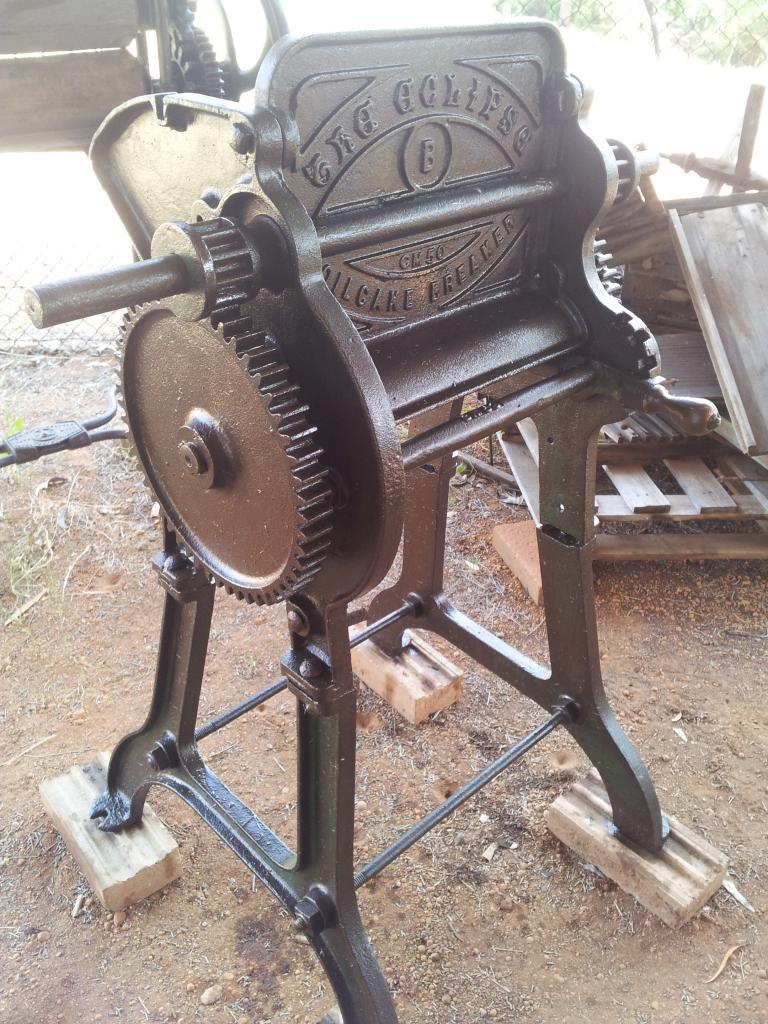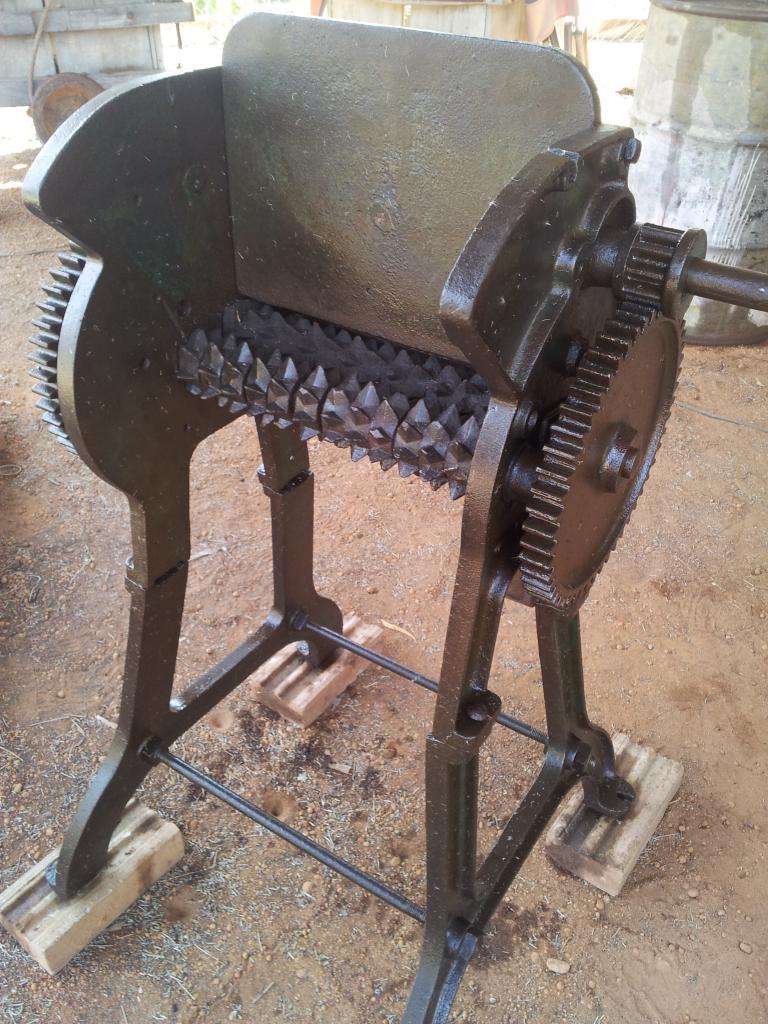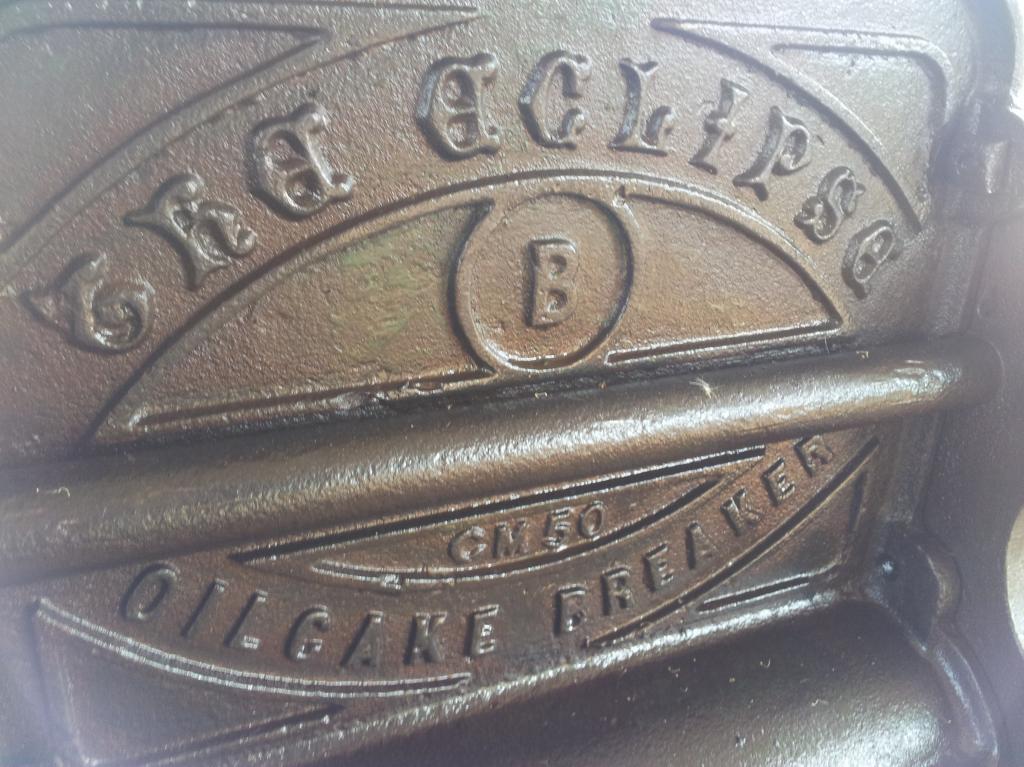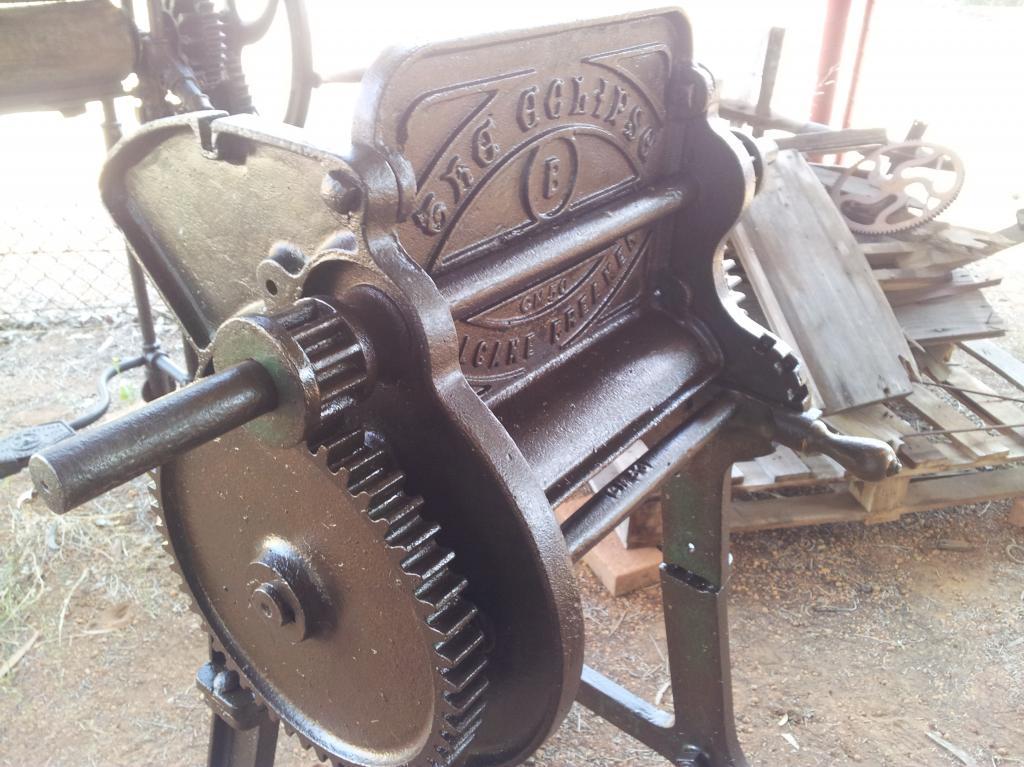OIL CAKE BREAKER
1861Oil cake breaker, supported on metal stand. Metal roller with embedded spikes designed to break up heavy slabs of linseed cake used for animal feed. Manufacturer and model number embossed on metal back board. Missing steel handle which may have been an 'S' shape attached by a bolt or possibly a wheel. (there may have been a second handle on the opposite side) Associated timber board/frame also missing. Model; The Eclipse/B/cm 50.
Donated by Mr AE Davies, 63 Hicks Street, Gosnells between January and March 1962 prior to museum opening. He advised in a letter dated 19 December 1961 that the oil cake breaker was around 100 years old. In September 2015 information from the Local History Librarian of the City of Gosnells, Stephen O'Brien, was requested in an attempt to discover further provenance.
Provenance: His response as follows:
"Cake breaker: -
Donor: Albert Edward Davies, plumber. Took up 1 & a quarter acre block (63 Hicks St) in Jan 1932. Florence Davies added to title in 1964.
Albert still on Electoral Roll at that address in 1979.
Precise spot hard to find on old airshots owing to street numbering AND naming being changed. But I did it via old tax maps. No agricultural context evident apart from a few fruit trees. However, there are a few small sheds on the site. Site currently is on Hartley St, just back from Fremantle Rd. Erased for seven units early 1990s. Can't say for an absolute sure, but it looks like there's no traceable Gosnells agricultural context for the item."
Details
Details
Manufactured by R Hunt & Co, Essex UK
The Oil Cake breaker was used by progressive dairy and pig farmers to break up the oil cakes they fed to their stock. These were bought in thick heavy discs, about 60cm across, and had to be broken up before soaking and fed out. (originally designed to be used to break up linseed cake - a feed that was used in the UK for cattle)
Excerpt from article titled 'Gadgets designed with the small farmer in mind' by Morris Pottinger, John O'Groat Journal & Caithness Courier ':.an oil cake kibbler, used to break up the hard heavy flat slabs of linseed cake. The kibbler was quite heavy to drive: spiky rollers did the work. The broken-up cake dropped into a wooden box or tray below, ready for feeding. The machine had a slotted tray chute to let the powdery stuff sift through into a box while the larger bits shot off the end into another box. The powdery bits were usually given to the bucket-fed young calves mixed with a sop of milk, skimmed or separated, or whey after churning butter.'

